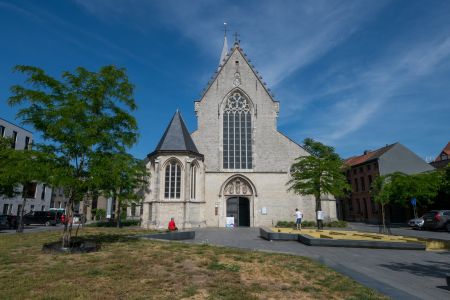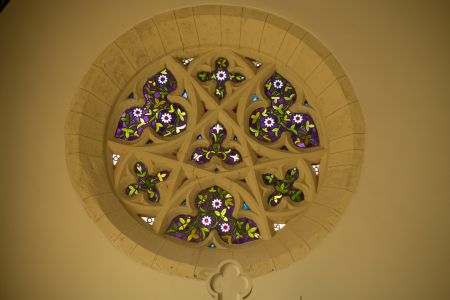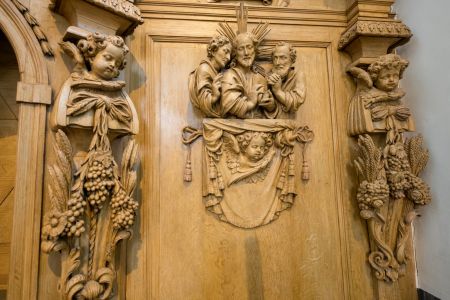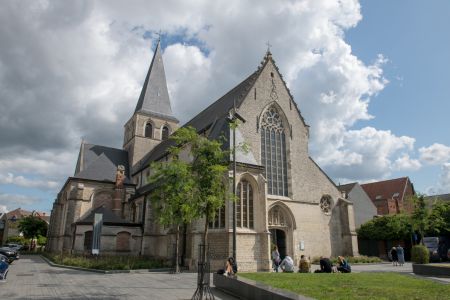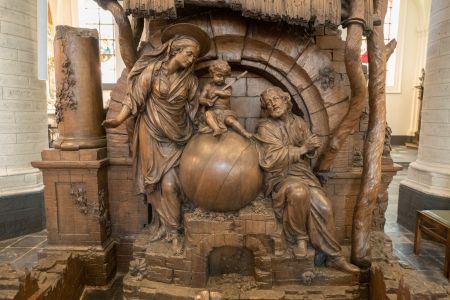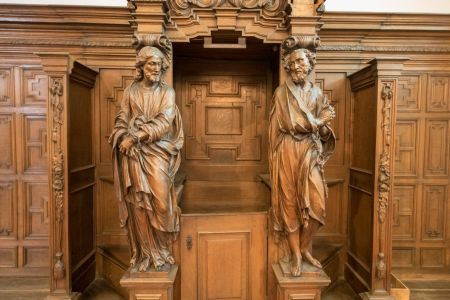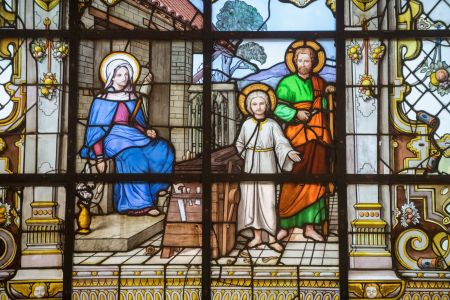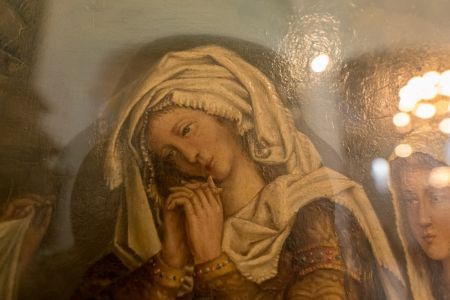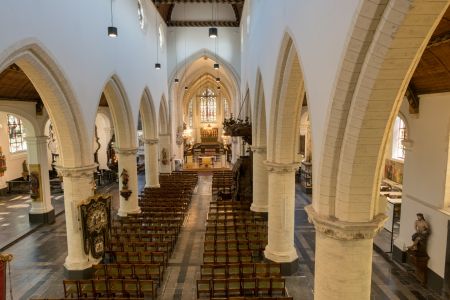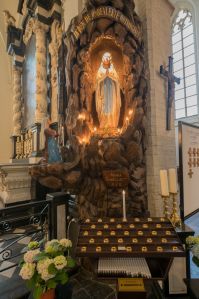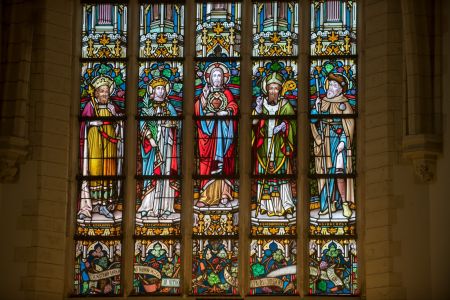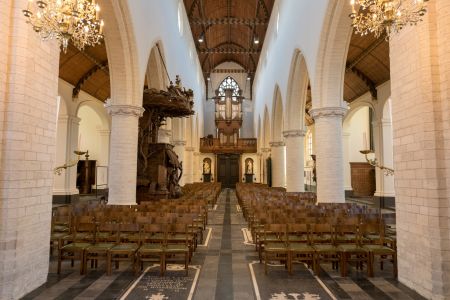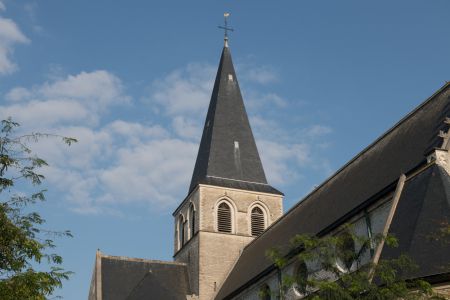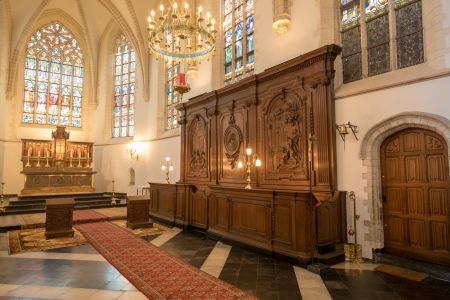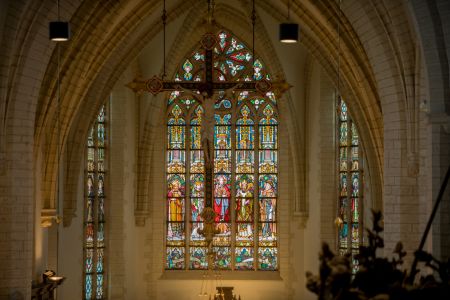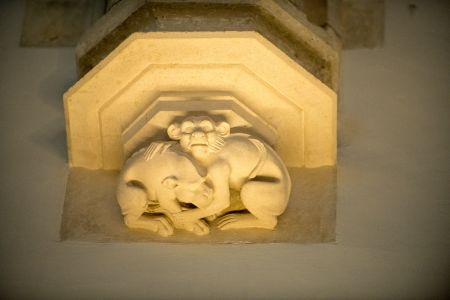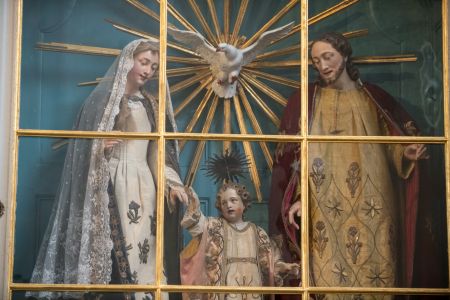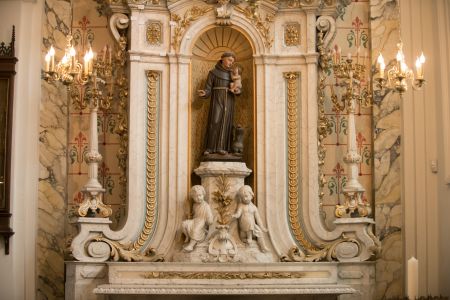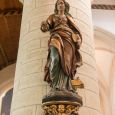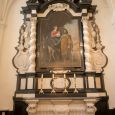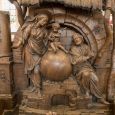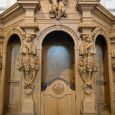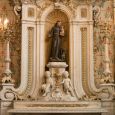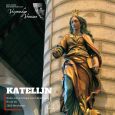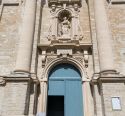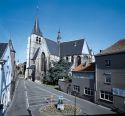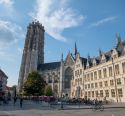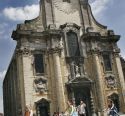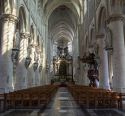Church | 1343 | Gothic | Catholic Church

Map
Opening hours
01 April - 31 October
Mon -
Tue 13.00 - 17.00
Wed 13.00 - 17.00
Thu 13.00 - 17.00
Fri 13.00 - 17.00
Sat 13.00 - 17.00
Sun 13.00 - 17.00
01 November - 31 March
Mon -
Tue 13.00 - 16.00
Wed 13.00 - 16.00
Thu 13.00 - 16.00
Fri 13.00 - 16.00
Sat 13.00 - 16.00
Sun 13.00 - 16.00
Guided tour
Religious offices
Description
The sober character of the church is partly the result of it being erected in a poorer part of Malines and partly due to the 19th century restoration in neo-gothic style.
During het Reformation wars (1572-1580) the church suffered extensive damage. In 1585 restoration was started and in the 16th and 17th centuries the interior was enriched with valuable furniture and works of art. In the first half of the 16th century the “Fontes” chapel was built against the north aisle. In 1643 Isabella Danesin paid for the building of the chapel of St. Joseph. The famous architect Lucas Faydherbe from Malines designed a marble baroque altar for the chapel.
Between 1770 and 1775 the church received a thorough renovation under the patronage of church master Carolus Van Pijperzeel. Stone arches were erected to support the gothic wooden vault ceilings of the nave and transepts. The family also paid for new flagstones, an organ loft with a Van Peteghem organ, new choir stalls and a pulpit by Pieter Valckx (1734-1785).The pulpit refers to the worship of popular saints such as St. Catherine and St. Anthony.
St. Catherine refused to renounce her christian faith and was tortured by tying her to a wheel. References in the church include 12 rosette windows in the nave, symbols of St. Catherine’s torture, and a beautiful rosette window in the facade.
End 19th century it was decided to restore the old image of the church and replace the rich interior with a neo-gothic one. Antwerp architect Frans Baeckelmans drew the design and architect Philippe Van Boxmeer from Malines executed the restoration. Thus the church was almost entirely transformed into its current appearance.
The church of St. Catherine is one of 7 historic churches in Malines, promoted by Torens aan de Dijle vzw, in cooperation with the city of Malines.
KIKIRPA : Photo-library online
Photos
Remarkable elements
Statue of Saint Catherine
The statue of Saint Catherine dates from the end of the 16th century and is attributed to the Mechelen sculptor Thomas Hazart. St. Catherine is a mythical figure from Roman times. According to legend, she refused to renounce her Christian faith, on which the Roman emperor sentenced her to death. She was tied up between the spokes of a wheel, which was then quickly turned around, after which death would normally follow. Legend has it, however, that it was not Catharina who broke, but the wheel. They then proceeded to decapitation, but something unique happened there too: milk flowed out of the wound, which drove out the plague in the city.
Translated with www.DeepL.com/Translator
Chapel and altar of Saint Joseph
Remarkable in the St Joseph's Chapel with its stone vault is the baroque altar in white and black marble from ca. 1650 - pay particular attention to the two twisted columns - is by Lucas Faydherbe (1617-1697). It is the oldest altar we know of his. The original painting by Jacob Jordaens has been replaced by a 19th-century "Flight to Egypt" by Jos Paelinckx (1781-1839). Joseph plays a central role in this story, one of the few times in the gospel.
Translated with www.DeepL.com/Translator
Pulpit
The pulpit (1774) is a work by the Malinois Pieter Valckx (1734-1783), based on a design by Theodoor Verhaegen (1700-1759). The Holy Family seeks shelter under a thatched roof, in the ruins of a temple. Jesus sits on the globe between Joseph and Mary, holding a cross in his arms. Angels and clouds hover between the tree branches that form the sounding board. They were angels who broadcast the Good News at Christ's birth. Also on the pulpit the Good News was proclaimed.
Translated with www.DeepL.com/Translator
Confessionals
The church contains a beautiful series of confessionals from the fourth quarter of the 17th century, all by Nicolaas Van der Veken (1637-1709), a pupil of Lucas Faydherbe. Their symbolic language is mostly classical: it is about sins and their redemption. The sculpture was recovered from elsewhere in the church and only used for confessionals in 1817.
Note: Nicolaas Van der Veken also made the wooden statue of the Holy Family (1659). The head and hands of the statue are polychrome and finely finished, in contrast to the rather roughly worked bodies. The intention was to dress the figures.
Cave of Lourdes
In 1858, in a cave in Lourdes, the Blessed Virgin appeared to Bernadette Soubirous, then 14 years old. Shortly afterwards dozens of surrogate caves were built in Flanders, in the open air and in churches. The clergy strongly stimulated Marian devotion in that period, among other things with the dogma of the Immaculate Conception from 1854: Mary was conceived by her parents free from original sin. The popular devotion around the Blessed Virgin, which in the 19th century mainly 'appeared' to simple people (the poor, children, simple-minded people, etc.), was used in the church's struggle against 'modern progress' and against disbelief. This cave of the Katelijnekerk was consecrated on 11 February 1937.
The Chapel of Anthony
Like Saint Joseph, Anthony also has a chapel in the church, but it is much more recent: it dates from 1834 and stands symmetrically across the street. Her altar and stained-glass windows are dedicated to the saint. Anthony of Padua (Lisbon, 1195 - Padua, 1231) was a Franciscan from the time of the founder of the order, Francis of Assisi. There are all kinds of wonderful stories about him: a count would have seen him one night with a child in his hands, enveloped in rays of light (hence the statues of Anthony with the child). One day Antonius' Bible would have been stolen and returned to God by the thief after a prayer. Hence Antonius' help is called upon to find lost objects.




